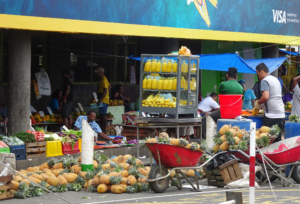5 Facts About Poverty in Fiji
 Fiji is a remote archipelago in the South Pacific Ocean that gained independence from Britain in 1970. Though famed for its tropical beauty and adoration for the rugby ball, Fiji has perennially struggled with poverty reduction and sustaining growth. Here are five facts about poverty in Fiji.
Fiji is a remote archipelago in the South Pacific Ocean that gained independence from Britain in 1970. Though famed for its tropical beauty and adoration for the rugby ball, Fiji has perennially struggled with poverty reduction and sustaining growth. Here are five facts about poverty in Fiji.
5 Facts About Poverty in Fiji
- Poverty rates: According to the Asia Development Bank’s (ADB) latest Household Income Expenditure Survey, from 2019-2020, about 29.9% of Fijians were under the national poverty line, equating to 258,053 of the total population. This was done using a basic needs poverty line (BNPL) of 2,179.39 (US$1,033.28) per adult equivalent (PAE) per year. Almost a third of the population is, therefore, trapped below the poverty line.
- Uneven growth: Poverty in Fiji is unequally dispersed across the island’s regions. The level of inequality is among the lowest in the wider East Asia Pacific region, as indicated by a Gini Coefficient of 30.1. Notably, poverty rates are higher in the more remote outer islands, where it affects 36.8% of the population, in contrast to the main island of Viti Levu, where 28.1% of citizens experience poverty. Fiji grapples with an urban-rural divide among its impoverished population. While 62% of the country’s population lives in rural areas, poverty indices in these regions are twice as high as those in urban areas.
- Poverty reduction faltering: In the past 15 years, Fiji’s attempts at poverty reduction have stagnated. Pacific News Service reported this was the case even before COVID-19. The poverty rate in 2014 was 28.1%, which was 1.7% lower than the rate recorded in 2020. Due to economic and social vulnerabilities, the nation has been unable to continuously drive economic growth and deliver on development and poverty targets.
- Vulnerable to shocks: Fiji is a small, developing nation. This makes it vulnerable to environmental and global events that aggravate poverty. COVID-19 saw border closures negatively impacting the country’s important tourism industry. More than 100,000 people are estimated to have become unemployed or faced reduced hours during the pandemic. Natural disasters are also quite common, a recent example being Cyclone Yasa. These events hinder growth in agriculture and consequently exacerbate food security and poverty in Fiji.
- Clean water and sanitation: According to Action on Poverty (AOP), Fiji faces significant challenges in terms of access to water and sanitation, particularly in remote and economically disadvantaged areas such as Lekutu. Promisingly, AOP and Partners for Community Development Fiji (PCDF) have provided workshops on the safety of water sources. This could help Fijians identify water supply problems and avoid water-borne diseases.
Looking Ahead
As a small island nation still recovering from a global pandemic, Fiji has obstacles to overcome on its path to poverty reduction, with its 2030 sustainability goals still at risk. A strong economic recovery may be essential, with a revitalization of the tourism and agricultural sector as a priority for the government. AOP’s initiatives and continued commitments from ADB, which pledged $150 million in 2022 for the Sustainable and Resilient Recovery Program, provide reason to be hopeful about the fight against poverty in Fiji.
– Sam Waterkeyn
Photo: Wikimedia Commons
